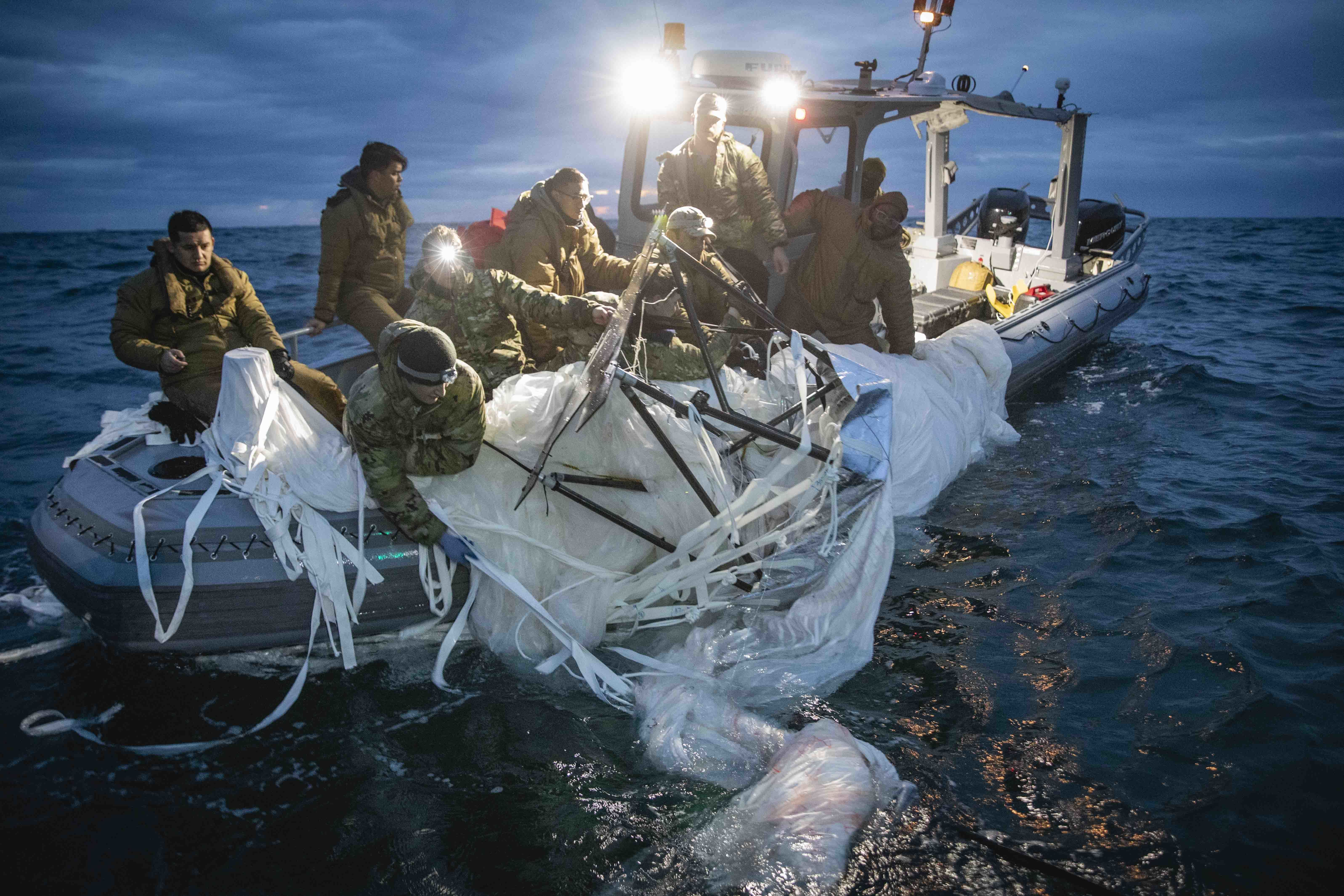Previous Chinese spy balloons over US were classified as UFOs: report

We may now know how some Chinese spy balloons managed to fly into U.S. airspace under the radar.
A Chinese surveillance balloon drifted through American skies for about a week before an F-22 fighter jet shot it down off the coast of South Carolina on Saturday (Feb. 4).
That same day, the U.S. military revealed that similar Chinese balloons had intruded on U.S. airspace at least three times during the administration of President Donald Trump, which ran from January 2017 to January 2021.
Those previous incursions didn't make the news. Indeed, it took a while even for top American military officials to learn about them, according to a report in The New York Times, at least in part because some incidents were initially classified as unidentified aerial phenomena (UAP), as UFOs have recently been branded.
Related: Chinese surveillance balloon in US airspace causes international stir
Just shot at it! View from my house in Myrtle. pic.twitter.com/85EZ3EDbYqFebruary 4, 2023
"Balloons account for many of the unexplained incidents the Navy and other military services have tracked in recent years. The previous incidents, like other unexplained events, were handed over to a Pentagon task force charged with investigating UFOs and other aerial phenomena," The Times wrote in the story, which was published on Tuesday (Feb. 7). "As the Pentagon and intelligence agencies stepped up efforts over the past two years to find explanations for many of those incidents, officials reclassified some events as Chinese spy balloons."
"It is not clear when the Pentagon determined the incidents involved Chinese spying. When the determination was made, officials kept the information secret to avoid letting China know their surveillance efforts were uncovered," The Times added, citing multiple U.S. officials who spoke on condition of anonymity.
Breaking space news, the latest updates on rocket launches, skywatching events and more!
The U.S. Department of Defense (DOD) has taken a greater, and much more public, interest in UAP over the past few years. In May 2021, for example, the Pentagon announced the creation of a UAP task force. The organization's chief goal is "to detect, analyze and catalog UAPs that could potentially pose a threat to U.S. national security," Pentagon officials said in a brief statement released a few months later.
Then, in July 2022, the DOD created the All-domain Anomaly Resolution Office (AARO), to track UAP in space and in the air (and even under water, if some venture into that domain).
Last month, DOD's Office of the Director of National Intelligence released a highly anticipated and long-delayed report on UAP, which was mandated by the 2022 National Defense Authorization Act.
The unclassified report delves into 510 UAP sightings, using information gathered by a variety of intelligence agencies and military branches, along with the the Federal Aviation Administration, the National Oceanographic and Atmospheric Administration, the Department of Energy and NASA.
About one third of those 510 sightings — 171, to be precise — remain "uncharacterized and unattributed," according to the report. But nearly as many, 163, were identified as balloons or "balloon-like entities." How many of those may have been foreign surveillance craft is unknown.
Chinese officials, for their part, have apologized for the recent balloon incursion. But they've claimed that the airship was a benign scientific vessel collecting meteorological data that was blown off course over the U.S.
That explanation doesn't wash with the U.S. military, however.
"This was a PRC [People's Republic of China] surveillance balloon," an unnamed DOD official said in an update released by the Pentagon on Saturday. "This surveillance balloon purposely traversed the United States and Canada, and we are confident it was seeking to monitor sensitive military sites."
Mike Wall is the author of "Out There" (Grand Central Publishing, 2018; illustrated by Karl Tate), a book about the search for alien life. Follow him on Twitter @michaeldwall. Follow us @Spacedotcom, or on Facebook and Instagram.

Michael Wall is a Senior Space Writer with Space.com and joined the team in 2010. He primarily covers exoplanets, spaceflight and military space, but has been known to dabble in the space art beat. His book about the search for alien life, "Out There," was published on Nov. 13, 2018. Before becoming a science writer, Michael worked as a herpetologist and wildlife biologist. He has a Ph.D. in evolutionary biology from the University of Sydney, Australia, a bachelor's degree from the University of Arizona, and a graduate certificate in science writing from the University of California, Santa Cruz. To find out what his latest project is, you can follow Michael on Twitter.
